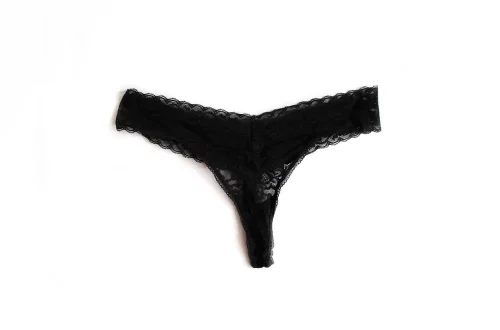
Optimal Humidity Levels for Crested Gecko Care and Health
Maintaining the right environment for your crested gecko is crucial for its overall well-being. These unique reptiles, known for their vibrant colors and charming personalities, thrive in specific conditions that mimic their natural habitat. One of the most critical factors in their care is humidity, which plays a significant role in their health and comfort. Unlike many other pets, crested geckos come from tropical climates, where humidity levels fluctuate throughout the day and night. Understanding how to replicate these conditions in captivity can lead to a happier, healthier life for your pet.
Humidity affects various aspects of a crested gecko’s life, from hydration to shedding. Inadequate humidity can lead to dehydration, respiratory issues, and complications during the shedding process. Conversely, excessive humidity can create an environment conducive to mold and bacterial growth, which can harm your gecko’s health. Therefore, achieving the optimal humidity level is essential not only for their physical health but also for their behavior and activity levels. Let’s explore how to create and maintain the perfect humidity for your crested gecko, ensuring it thrives in its captive environment.
Understanding the Natural Habitat of Crested Geckos
Crested geckos, native to New Caledonia, inhabit lush forests where humidity levels can reach anywhere from 60% to 80% throughout the day. This high humidity is vital for their survival, as it aids in hydration and supports their unique physiological needs. In the wild, these geckos have adapted to their environment by developing behaviors that help them manage their moisture intake. For instance, they tend to be more active during the evening and night when humidity levels are typically higher due to cooler temperatures and nighttime dew.
In captivity, replicating these conditions is essential for your gecko’s health. One key aspect is to create a habitat that retains moisture while allowing for proper ventilation. A well-ventilated terrarium can help prevent mold and bacteria growth, which can thrive in overly humid environments. Additionally, incorporating plants and substrates that retain moisture can help maintain the desired humidity levels. Options like coconut fiber or moss can be excellent choices for bedding, as they can hold moisture without becoming overly saturated.
Monitoring humidity levels is another critical component of care. A hygrometer can be a valuable tool for keeping track of the humidity in your gecko’s enclosure. Regular checks will allow you to adjust your care routine as needed. If the humidity drops too low, consider misting the tank or adding a shallow water dish to increase moisture levels. Conversely, if humidity rises too high, ensure adequate ventilation and remove any excess water sources.
Creating a microhabitat within the terrarium can also benefit your crested gecko. Providing areas with varying humidity levels allows your gecko to choose where it feels most comfortable. This mimicry of their natural environment encourages natural behaviors and can help mitigate stress.
The Importance of Proper Humidity for Health
Optimal humidity levels are crucial for various aspects of a crested gecko’s health. One of the most significant effects of humidity on their well-being is its role in hydration. Crested geckos absorb moisture through their skin, and if the humidity is too low, they risk dehydration. This condition can lead to lethargy, loss of appetite, and even organ failure in severe cases.
Moreover, humidity plays a vital role in the shedding process. Like all reptiles, crested geckos shed their skin regularly, and proper humidity is essential to facilitate this process. Low humidity can cause shedding problems, leading to retained skin, which can constrict toes or tails and cause pain or injury. A well-hydrated environment helps ensure that shedding occurs smoothly and without complications.
Respiratory health is another area where humidity levels are critical. Crested geckos are susceptible to respiratory infections, which can be exacerbated by inadequate humidity. A dry environment can irritate their lungs and airways, making them more vulnerable to infections. Conversely, excessively high humidity can lead to respiratory issues as well, especially if the enclosure lacks proper ventilation.
In summary, maintaining the right humidity levels not only fosters a comfortable living space but is also fundamental to your crested gecko’s health. Regular monitoring and adjustments to their environment can help prevent serious health issues and ensure a long, vibrant life.
How to Measure and Adjust Humidity Levels
Measuring humidity levels accurately is a crucial step in ensuring the well-being of your crested gecko. Investing in a reliable hygrometer is essential for monitoring the humidity in the terrarium. There are two main types: analog and digital. While both can be effective, digital hygrometers often provide more precise readings and are easier to read at a glance.
When setting up your gecko’s enclosure, place the hygrometer at different heights and locations within the tank to get a comprehensive understanding of humidity levels. Humidity can vary from the bottom to the top of the enclosure, so it’s essential to check multiple spots to ensure your gecko has access to the right environment.
If you find that humidity levels are too low, there are several methods to increase it. Regular misting of the enclosure can help raise the humidity, but be careful not to overdo it, as this can lead to excessive moisture. Adding a shallow water dish can also help, as the evaporation from the water will contribute to the overall humidity.
Another effective method for maintaining humidity is to use live plants, which naturally release moisture into the air. Plants like pothos or spider plants can thrive in a gecko’s habitat and contribute to a balanced humidity level. Additionally, consider using a substrate that retains moisture well, such as coconut coir or sphagnum moss.
If high humidity is a concern, ensure your enclosure is well-ventilated. This can be achieved by using a mesh lid or incorporating ventilation holes. Reducing the frequency of misting and ensuring the water dish is not overflowing can also help manage excess moisture in the habitat.
Common Mistakes to Avoid in Humidity Management
While managing humidity for your crested gecko, there are several common pitfalls that you should avoid. One major mistake is failing to regularly monitor humidity levels. Without consistent checks, you may inadvertently create an environment that is too dry or too humid, leading to health issues for your pet.
Another common error is over-misting the enclosure. While humidity is critical, too much moisture can lead to mold growth and create an unhealthy environment. It’s essential to strike a balance and ensure that the enclosure remains clean and free from excess water accumulation.
Using inappropriate substrates can also hinder your efforts to maintain optimal humidity. Avoid substrates that do not retain moisture well or those that can cause impaction if ingested. Instead, focus on natural substrates that can hold moisture while allowing for proper drainage and ventilation.
Additionally, neglecting to provide a temperature gradient within the enclosure can affect humidity levels. A basking area should be warmer, while a cooler side can help maintain moisture. This variation not only aids in temperature regulation but also encourages your gecko to move around and find the most comfortable spots based on their needs.
Lastly, remember that every crested gecko is different. Factors such as age, size, and individual preferences can affect their humidity needs. Regular observation of your gecko’s behavior can provide valuable insights into whether adjustments are necessary.
In conclusion, maintaining optimal humidity levels for your crested gecko is a critical component of their overall care. By understanding their natural habitat, recognizing the health implications of humidity, and implementing effective measurement and adjustment strategies, you can create a thriving environment for your pet.
**Disclaimer:** This article is not intended as medical advice. For any health-related concerns regarding your crested gecko, please consult with a veterinarian.




